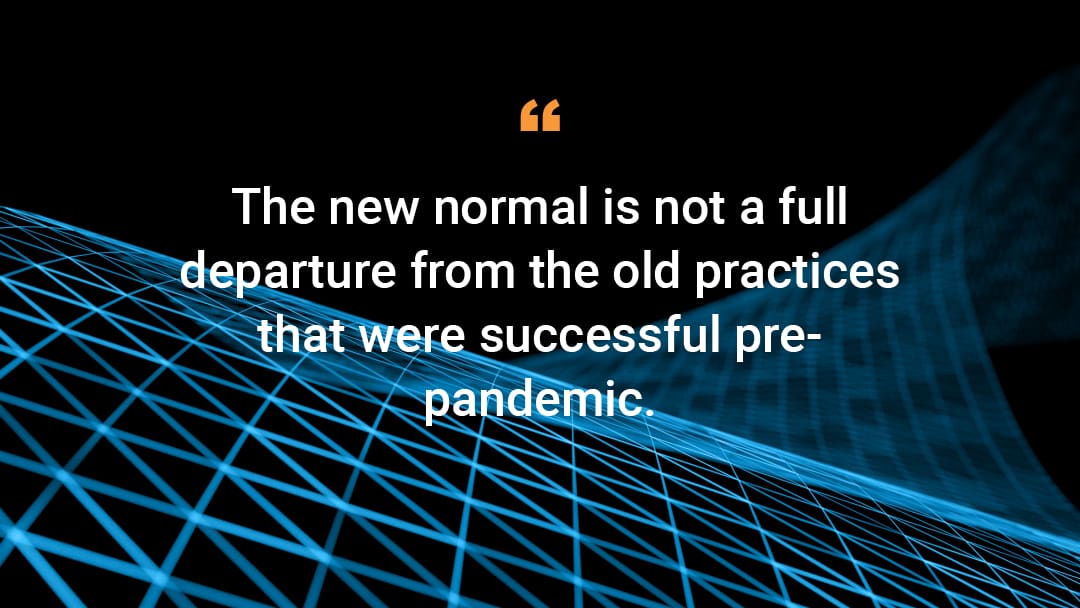Strategy for the Office Anywhere

The office is now anywhere and organizations must adopt a new approach towards security at the edge. Last week we talked about securing enterprise networks for remote work. In part two of this three-part series, we share our thoughts on the future of the office anywhere, and the strategy to succeed in a mobile-first environment.
Organizations must deploy a remote working strategy that suits the office anywhere model
CIOs need to demonstrate leadership as we move out of lockdown into a new model of working in which the office is wherever the employee is. It’s time to build on this initial success and embed a remote working strategy within organizations.
The key role of digitalization during lockdown
There’s no doubt that digitalization helped businesses stay afloat and ensure continuity during the lockdown. The pandemic broke through the most entrenched reluctance to adopt remote working. And let’s not forget that digital tools and platforms kept frontline workers connected and with access to key services and information.
As countries move out of lockdown, CIOs realize they are at an inflection point in terms of maintaining the initial investment in digital transformation for their organizations. They must decide whether remote working is worth incorporating into their long-term strategy.
The business case for the office anywhere
There are people who argue that working from home is a recipe for disaster: There are too many distractions to tempt employees away from work. On the other hand, there are studies that show remote working increases productivity. Even better, productivity can be measured. So where does that leave us? Let’s take a look at the proposed benefits of an office anywhere approach toward work.
1. Increased productivity. Informal studies indicate that productivity increases as red tape and bureaucratic processes are dismantled. The pandemic has provided employees everywhere with the chance to improve and innovate processes and communication.
2. Improved decision-making. By moving people and processes online, employees are required to make decisions that would have been made higher up in the command chain. With the appropriate support, organizations can turbocharge the decision-making process and unclog the bottleneck caused by overworked managers.
3. Reduced operational costs. The physical office will never go away. However, as fewer employees need to be there, organizations can downsize their physical premises and reduce costs in services like electricity and heating.
4. Improved environmental impact. There are many variables that contribute to this area. But let’s look at one in particular. Every mile the employee doesn’t drive improves the environment. It reduces traffic congestion, which in turn reduces journey times and improves the environmental and sustainability efforts of the company.
Enabling the office anywhere
We have identified three areas in which organizations should concentrate their efforts as they move out of the reactive phase of digitalization and into the consolidation phase:
- Create a clear path for employees to follow
- Ensure the effective use of technology
- Plan for a hybrid working model
1. Create a clear path for employees to follow
A shift toward a remote-first organization is a complex operation. CIOs, business unit directors, and HR departments need to work in close collaboration to create the roadmap for employees to transition smoothly. Together, they need to establish clear guidelines and expectations about meetings, communications, and security. It is critical for employees to understand the shared responsibility to keep data secure and for organizations to implement the adequate security mechanisms and processes to support the office anywhere.
2. Ensure the effective use of technology
Organizations need to ensure they have not only the right platforms for communication and collaboration, but the right “systems of work.” The aim of these systems of work is to deliver the effective use of technology to achieve the business’s objectives. In practical terms, we’re talking about enabling an office anywhere experience by delivering secure, seamless access to all business resources, with full mobility. Here at Akamai, we call this the Branch of One.
3. Plan for a hybrid working model
The new normal is not a full departure from the old practices that were successful pre-pandemic. In reality, CxOs will need to develop a long-term strategy that supports a hybrid work model. In this new normal, the employee may be primarily based remotely, but will not always be at home. The hybrid model must support a Branch of One approach, where all available resources are accessible to the employee securely anywhere, any time.
Although we are still imagining what the future will look like post COVID-19, it is crucial that CIOs show leadership to move from the reactive stance that dominated the previous months toward a proactive one. A long-term digital transformation strategy must be put into place to consolidate the successful initiatives developed during the lockdown and further develop a robust operational framework at all levels.
Learn how Akamai supports organizations in creating a secure office anywhere.



